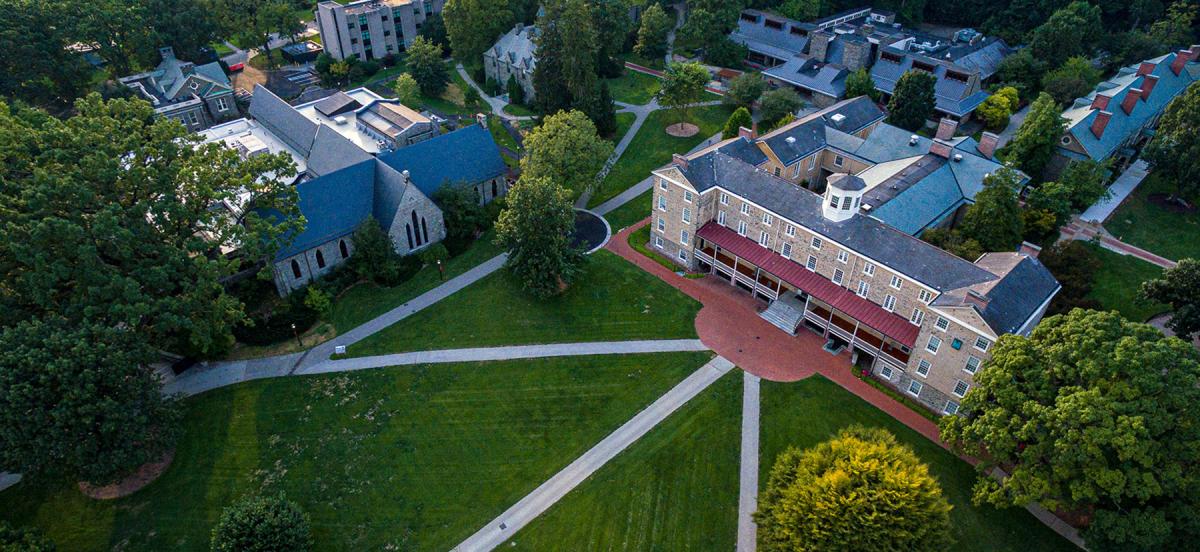Haverford Launches Student Loan Debt Relief Program

Photo by Holden Blanco '17.
Details
The first cohort of recipients—members of the Class of 2019—were recently notified of their debt-relieving awards, made possible by a generous gift from the Jaharis Family Foundation.
Haverford College is committed to ensuring that all qualified applicants can afford a Haverford education. This includes both meeting the full demonstrated financial need of all admitted students—including international students and transfers—and minimizing student debt at graduation. Even as Haverford caps its financial aid loans at $3,000 per student per year, a new program aims to help lighten that modest load.
The Haverford Student Loan Debt Relief Program (HSLDR), made possible thanks to the commitment of Steve Jaharis ’82 and the support of the Jaharis Family Foundation, is designed to assist graduates for whom $4,000 to $12,000 in student debt would be a burden, particularly those pursuing careers of high societal value and low remuneration.
“We want students to be able to pursue their passions, regardless of the student loans they may carry,” said Ann Figueredo ’84, vice president of Institutional Advancement and an early advocate for the program. “And though Haverford student debt is relatively low, it could still deter people from important careers as teachers, social workers, researchers, NGO leaders, and such. Our generous donor didn’t want students’ vocational choices influenced by how much debt they had.”
“Transitioning from college to full-time work brings excitement and stress," said Haverford College President Wendy Raymond. "We envision this program as an enhancer of excitement and a reliever of stress, for it allows our graduates to move more rapidly toward financial and professional well-being.”
Chartered during the recent Lives That Speak fundraising campaign, income from the endowed fund for HSLDR is now available for distribution, and the Class of 2019 was the first that was eligible to apply for its debt relief. Twelve awards were given this year, ranging from $900 to $1500 per applicant. Arlene Casey ’19, a math teacher from the Bronx, was one such applicant.
"I applied for the debt-relief program in order to make my career choice as an educator a more sustainable one,” she said. “I have wanted to teach for as long as I can remember and have loved the beginnings of being a teacher. In order to continue to pursue this career and pay off my loans, it would mean taking on extra work outside of teaching that would draw time away from my development as a professional. The support of the debt-relief program [will] allow me to dedicate more time to my students and developing strong curricular materials and lessons for them."
“Being approved for this program felt like Haverford telling me that I matter and I’m worth an investment,” said Alissa Valentine ’19, who works as a research technician in Northeastern University’s Developmental Neuropsychobiology Lab and is starting a Masters in Bioinformatics program there in January. “… Becoming a member of this program is an acknowledgment of my potential, and makes me feel supported and confident about my dream of becoming a neuroscientist.”
“Indeed, these awards signal our immense confidence in Haverford graduates’ abilities to contribute positively to our world," said President Raymond. "It is wonderful to be able to offer such support as a boost at a critical point in our young alums’ lives.”
This year’s HSLDR recipients are able to apply for the program for two additional years, for a total of three years of debt forgiveness. Members of the upcoming graduating class will be eligible to apply this summer ahead of the August 31 deadline.
“This program,” said Valentine, “is helping me gain some financial independence and stability, and pushing me closer to applying to a Ph.D. program and starting the next phase of my life as a researcher.”
“This outstanding program liberates Haverford graduates to pursue their dreams with confidence," said President Raymond. "We hope an early reduction of debt will widen our graduates’ choices for meaningful work.”



